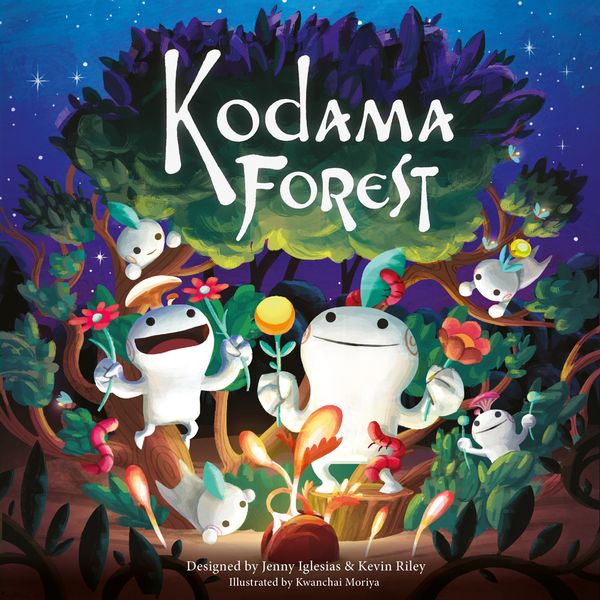Kodama Forest (2020) Board Game
Kodama Forest is a tile-placement board game released in 2020, designed by Kwanchai Moriya and published by Indie Boards & Cards. The game is set in a magical forest where players compete to create the most beautiful forest for their Kodama spirit.
Game Components of Kodama Forest
How To Setup Kodama Forest
To set up the game, each player places a player board to their left and right, ensuring every player has two boards adjacent to them. The forest tiles are drawn from a bag, and each player starts with three tiles. The bonus tiles (pandas, frogs, butterflies) are placed centrally, accessible to all players. Players create pools of these bonus tokens and frame each player board accordingly.
Gameplay Mechanics and Game Objective
Player Experience
In Kodama Forest, players must balance competition and cooperation, working with their neighbors to cover as much of the forest floor as possible while avoiding the kodama spirits. The game encourages strategic discussion between players about which tiles to place and where. Despite its simple rules, the game can become complex as players navigate the placement of tiles to maximize their score.
Pros
Cons
Personal Thoughts on Kodama Forest
Kodama Forest is ideal for families or casual gamers looking for a light, easy-to-learn game that promotes teamwork and strategy. However, it may not appeal to seasoned gamers seeking more complexity and challenge. The game’s unique blend of cooperation and competition makes it a great addition to a game collection for those who enjoy social, interactive gameplay. Despite some criticisms about component quality and gameplay depth, Kodama Forest remains a charming and visually appealing game that can be enjoyed by a variety of players.
We are supported by our audience. When you purchase through links on our site, we may earn an affiliate commission, at no extra cost for you. Learn more.

